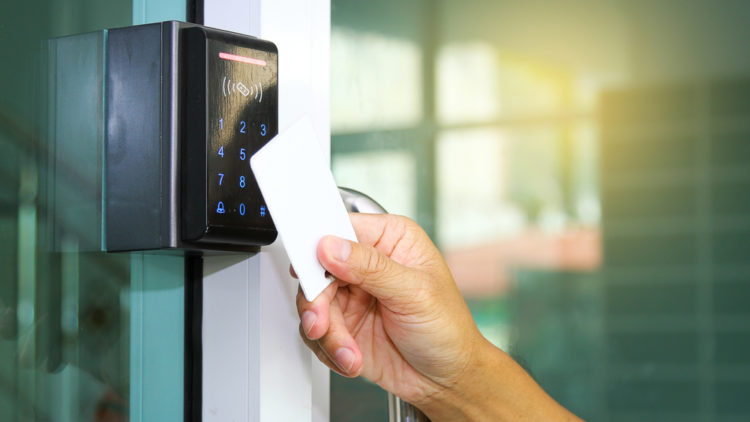Basics of Commercial Access Control – Part 1
Access control is a centralized platform that manages several locks and proximity sensors to streamline security. Its dashboard provides real-time data regarding the entries and exits of people at multiple entrances, which can be remotely programmed. Doors can be automatically locked and permit entry for authorized individuals using proximity, keypads, access cards, or biometric scanners.
Access control aims to give companies another layer of security by managing user permissions at entry locations. As an example, a business could bar entry after business hours. In addition, a facility can also allow employees and visitors to access the main entrances. However, certain areas would be restricted and need authorization. All of the above can promote security.
Commercial access control is ideal for colleges, commercial buildings, hospitals, manufacturing facilities, offices, and residential structures.
Credentials
As summarized below, a commercial access control system can be designed to use several credentials.
Access Cards and Key Fobs – Small devices configured to pair with proximity devices. Intended to be used as a key for entry, these cards and fobs are programmed for each user with a unique code.
Biometric Entry – Uses specific physical data to verify users and permit entry. Typically, these devices utilize a fingerprint scanner. Facial recognition and retina scan are other types of biometric verification technology gaining traction.
Keypads – Usually less costly than the above choices. Users must manually enter their identification code to unlock a door and obtain entry into authorized areas of a facility.
Improved Security
In contrast to the traditional key that can be copied, biometrics, proximity cards and fobs, and entry code credentials are unique and traceable to each user. Thus, commercial access control can provide real-time data regarding the entry and exit of each individual at a facility. As a result, criminal activities can be discouraged.
An access control system can restrict all entry points, permitting access to only authorized personnel during certain hours in restricted areas. An individual’s access can be immediately terminated without issuing new cards to other employees. Moreover, the key code for lost or stolen access cards can be blocked. Unlike a traditional key, there is no need to change the locks and issue new keys.
Part 2 will discuss the other benefits of commercial access control and Security Functions & Integrations Required.
Progressive Office Cabling
Founded in 1986, Progressive Office’s success has resulted directly from years of commitment to seeking cost-effective solutions. Progressive teams are committed to installing and operating your data cabling, access control, and telecom systems while minimizing disruption and downtime. Call our toll-free number (800) 614-4560 today.

